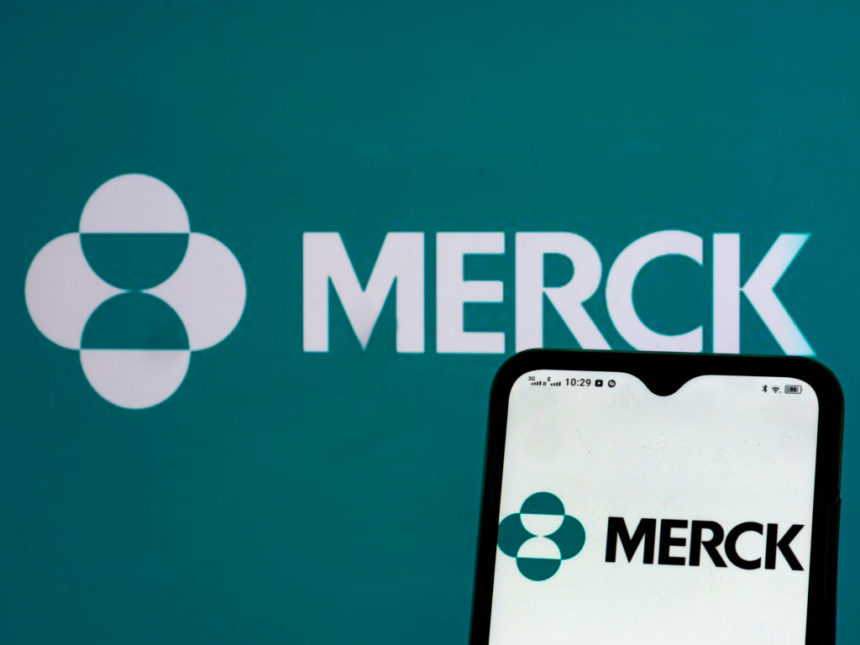Merck’s oncology drug Keytruda will outpace all Rx brands by global sales in 2028, as Roche rides its biologics stable to become the frontrunner among pharma companies, according to a five-year World Preview recently published by Evaluate.
Then again, no one’s expected to have it easy. The analysts expect a mix of legislative and regulatory unknowns, like the impact of pricing provisions in the Inflation Reduction Act (IRA).
Add to that commercial challenges, namely the end of the windfall drugmakers saw from COVID-19 vaccines and treatments, as well as the patent cliff caused by a slew of exclusivity losses. Most notable among those is probably top-seller Humira, AbbVie’s autoimmune megablockbuster, which loses protection in the U.S. this year.
Despite it all, pharma’s near-term growth trajectory looks good. Revenues are projected to grow at a compound annual growth rate (CAGR) of 5.9% from 2022 to 2028, reaching almost $1.6 trillion.
Meanwhile, Evaluate’s forecast calls for the 10 biggest drugs in 2028 to rake in more than $160 billion in revenue, similar to 2022’s top-10 tally (excluding COVID-related products).
That brings us to Keytruda, the cancer workhorse with approvals in some 38 different settings.
Expected to be the top-seller this year with revenue of nearly $25 billion, Merck’s anti-PD-1 powerhouse is set to grow its take by another $5 billion, which should keep it striding comfortably atop the blockbuster-brand sales chart at decade’s end. A subcutaneous formulation in Phase 3 development could tack on another $2.4 billion.
Anti-cancer checkpoint inhibitors aren’t the only big drivers of the sector’s top line.
Joining Keytruda in the top three, as per the forecast, will be Sanofi’s autoimmune drug Dupixent and Novo Nordisk’s incretin Ozempic, in that order. Although they’ll trail Keytruda’s 2028 revenue by about $10 billion, both can look forward to outsized growth ahead, given current sales of about $5 billion apiece.
Cancer drug revenues will balloon to $346 billion in five years, more than double the next largest therapy area by sales, which is central nervous system (CNS) treatments. Where drugs like Dupixent will have their edge is in growth. Immunomodulators as a class will surge 13.5% versus 11.4% for oncology and 8.6% for CNS, per the forecast.
Keytruda may be a franchise all its own, but revenues won’t be enough to power its developer into the top spot among pharma companies. That distinction will go to Roche, whose 2028 revenue Evaluate pegs at upwards of $70 billion. Roche’s newfound supremacy will be supported by a suite of new monoclonal antibodies, like Tecentriq for cancer, Ocrevus for multiple sclerosis and the eye-disease treatment Vabysmo, along with non-oncology bispecific Hemlibra, sold for hemophilia.
Merck will sit in second place, alongside AbbVie in bronze position, the analysts predict. As for the rest of the top 10, two companies are poised to break in: Novo and Eli Lilly.
The former has carved out a commanding position in the lucrative GLP-1 class, which includes the market-leading semaglutide franchise. Sold as Ozempic in type 2 diabetes, the drug is also sold in obesity as Wegovy, and there is also an oral formulation for diabetes, called Rybelsus. Combining 2028 forecast sales for all three yields $33 billion, eclipsing even Keytruda.
However, Lilly is closing the gap. Diabetes drug Mounjaro, which mimics GIP as well as GLP-1, arrived on the market in May 2022 to massive demand, and could form the basis of Lilly’s own incretin franchise. Active ingredient tirzepatide is angling to be approved for weight loss later this year.
Indeed, the end of the decade will see much change from this year’s pharma leaders Pfizer, Merck and Johnson & Johnson. Beyond 2028, it’ll be a whole new ball game. Patent expiry pressures are set to take a bite out of even the checkpoint inhibitor giants, like Keytruda and Bristol Myers Squibb’s Opdivo.







